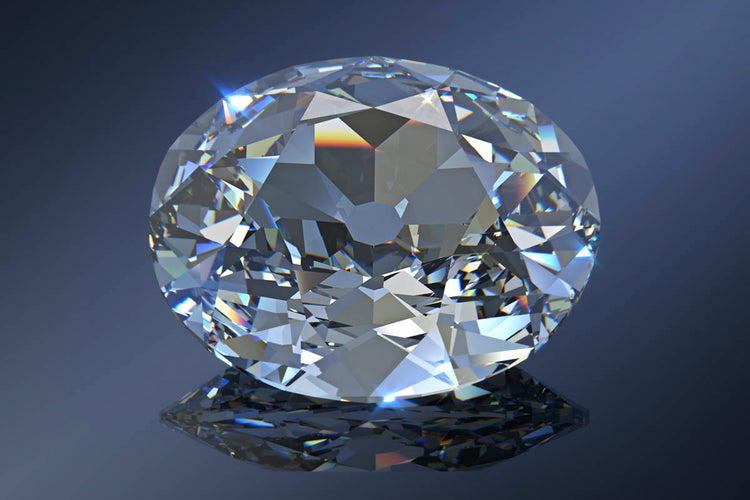By Beth Bernstein
The Alluring Oval Diamond Ring
What do Hailey Bieber, Blake Lively and the jewels in the Tower of London all have in common? Oval cut diamonds. The oval cut diamond ring went in and out of fashion since the 1800s but as of the mid-21st century, it looks like it is here to stay and has become one of the most popular shapes for diamond engagement rings. In 2021, according to Google Trends, “oval engagement rings” was the top-searched ring cut over the past five years. Before we get into the history, let’s look at why oval diamond rings are back in high demand for diamond engagement rings. They have a larger surface than round diamonds so even if they are of the same carat weight, they appear bigger to the eye. Unlike the emerald, marquise or pear shapes, ovals, like rounds have no sharp corners; therefore, they are less prone to chipping and cracking. If set from north to south they offer a look that makes the finger seem longer. But there are equally striking east to west settings for those who prefer more coverage across the finger. Depending on some technical aspects which we will get into later, the modern oval which also has 58 facets offers an alluring and chic, elegant, yet timeless options to round diamonds.
The Overall History of the Oval Diamond Cut
Like most diamonds that comprise modern diamond jewelry, oval cuts have been around in some incarnation throughout this gemstone’s history. The 18th century saw the advent of the first brilliant style of faceting, for example in old mine and cushion cuts and the oval cut was also recorded as one of the diamond shapes at that time.
The most famous oval diamond was the Koh-i-Noor, which in 1850 after being owned by Persian and Indian rulers for centuries with a weight of 186-carats was presented to Queen Victoria, who had it cut into a brilliant 105.60-carat oval shape. Then in 1937, it was placed into the coronation crown for Queen Elizabeth, the Queen Mother. It now can be viewed in the Tower of London with the other crown jewels.
In an even earlier time, 1666 to be exact, a different oval diamond of royal provenance—the Wittelsbach Blue was first cut as a 35.56-carat cushion cut modified brilliant. It was given as part of the dowry for the marriage of Infanta Margarita Teresa of Spain into the House of Hapsburg. In 1722, it was part of a different dowry for a marriage into the House of Wittelsbach. Then in 1931, the diamond vanished and was not found until 1961, thirty years later. Jeweler Lawrence Graff bought it at auction for $24.3 million in 2008, he cut the original 35.56-carat cushion modified brilliant diamond to a 31.06-carat oval to turn it into a fancy deep internally flawless gem and was renamed the Wittelsbach-Graff after his London-based company.
Oval Cut Ring Innovation
The oval as a shape went out of fashion for much of the early to mid-twentieth century until a Russian-born diamond cutter, Lazare Kaplan invented the modern oval cut in 1957, making the oval desirable once again. The family business was diamond cutting and he learned the time-honored techniques from them. But he had uncanny skills, which were further developed by his uncle, Abraham Tolkowsky, who invented the ideal cut diamond and Marcel Tolkowsky, who invented the modern round brilliant. Lazare’s ability to use same facet pattern in a new diamond shape earned Kaplan a spot in the Jewelers International Hall of Fame.
*Header image courtesy of Shutterstock
Beth Bernstein is a jewelry historian, collector of period and modern jewelry and a purveyor of all things sparkly. She has penned three books—'My Charmed Life,' a memoir; 'Jewelry's Shining Stars,' a modern jewelry design coffee table book; and 'If These Jewels Could Talk,' an in-depth look at celebrities and the stories behind their legendary jewels on the silver screen and in real life—with a fourth one in the works. She has written and continues to write for major print and online magazines on all subjects pertaining to jewelry and style.



